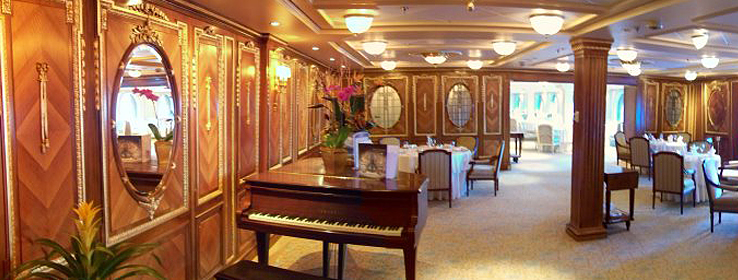BY HOLLY O'DELL
Found objects and repurposed items add personality and originality to residential and commercial designs.
Whether it's a sculptural vase found at a vintage boutique or tiles reclaimed from a historic building, found objects are making a big statement in both residential and commercial design. "Eco-friendly, budget-conscious clients with an appreciation for outstanding design are demanding that we use some reused or repurposed materials or items in their décor," says designer and colorist Denise Turner, president of Color Turners. "This has definitely forced interior designers to ‘think outside the paint box.'"
Repurposed elements let clients take design risks, too. "They're no longer afraid to blend the old with the new," Turner says. "They have fewer hard-set rules about what's ‘good' design. For example, they'll pick up a used chair at a thrift shop and make it uniquely their own with whimsical fabric or bold paint hues. Because they're not making a major investment, they're not afraid to play with colors."
The desire to incorporate repurposed items correlates with consumers' continued interest in recapturing the past — particularly the concepts of the midcentury modern era. Turner sees a return to common color palettes from the 1950s, '60s and '70s, including everything from Barbie pink to blues, violets and greens. Many of today's textiles also mimic the patterns found in this time period. "The '50s were a more optimistic period," she says. "There was great prosperity and a lot of good things going on with home d+¬cor. There's so much clutter in people's lives today that they've pared down their design styles."
Designers are also finding ways to integrate found objects into commercial spaces. For a client in the entertainment industry, designer Alison Kennedy and her team dug into the company's storage areas, where they found a trove of historic treasures to integrate into the headquarters' clean, modern architecture. Items ranged from clothing to retro car fenders to vintage posters reframed and hung as art. The team also found old photographs, printed them on metal strips and incorporated them into the architecture.
Although not part of the initial design concept, the archival elements were a hit. Kennedy's client "realized that bringing repurposed elements into a space gives it identity, character and interest," she says. The result: "An awesome experience for the people who work there and the people who walk through. It has a commercial-meets-museum-meets-entertainment feel," says Kennedy, who now works at Booz Allen Hamilton in Washington, D.C.
Hospitality venues are getting in on the action, too. Design firm BG Studio International works regularly on cruise ships, and a few specialty restaurants presented the opportunity to reuse architectural elements. On the Celebrity Millennium ocean liner, the Olympic restaurant captures Titanic-esque style with the help of ornate wood panels reclaimed from a Southampton home. Because there weren't enough panels to complete the space, BG Studio (in conjunction with Birch Coffey Design Associates) found a subcontractor to replicate the panels and restore the original ones. "You couldn't tell the difference between what was original and what was new," says Hans Galutera, co-founder and principal of BG Studio.
Similarly, BG Studio and Birch Coffey used wall panels from the SS United States, a luxury passenger liner from the early 1950s, in the Art Deco–themed Normandy restaurant on the Celebrity Infinity.
To create a cohesive style between old and new, Galutera ensures the authenticity of the artifacts, as well as their consistency with the rest of the space. "They need to resonate with the architectural details and period of furniture," he says, "and they definitely have to capture the spirit of the time and not be jarring. Harmony and scale are important."








